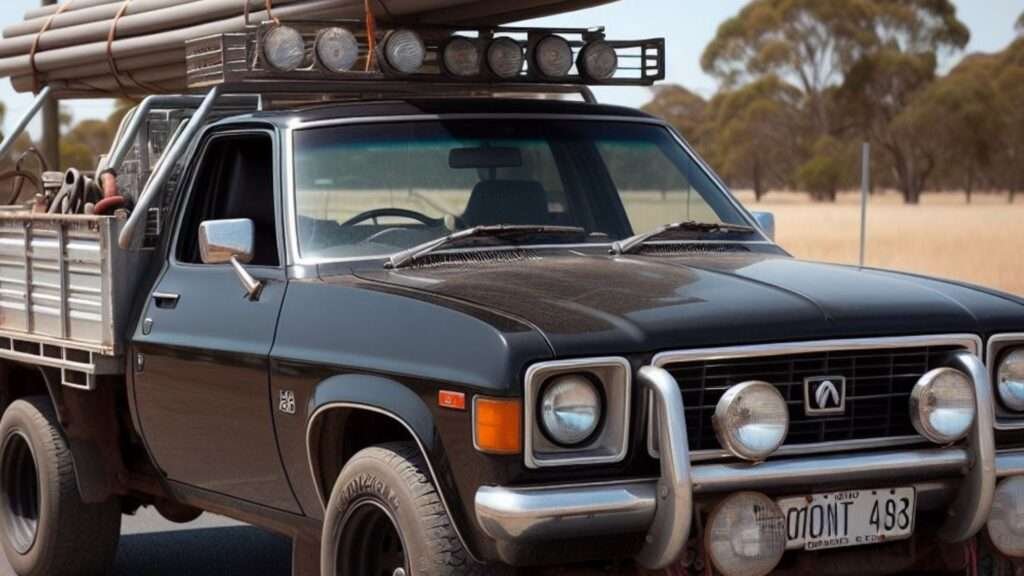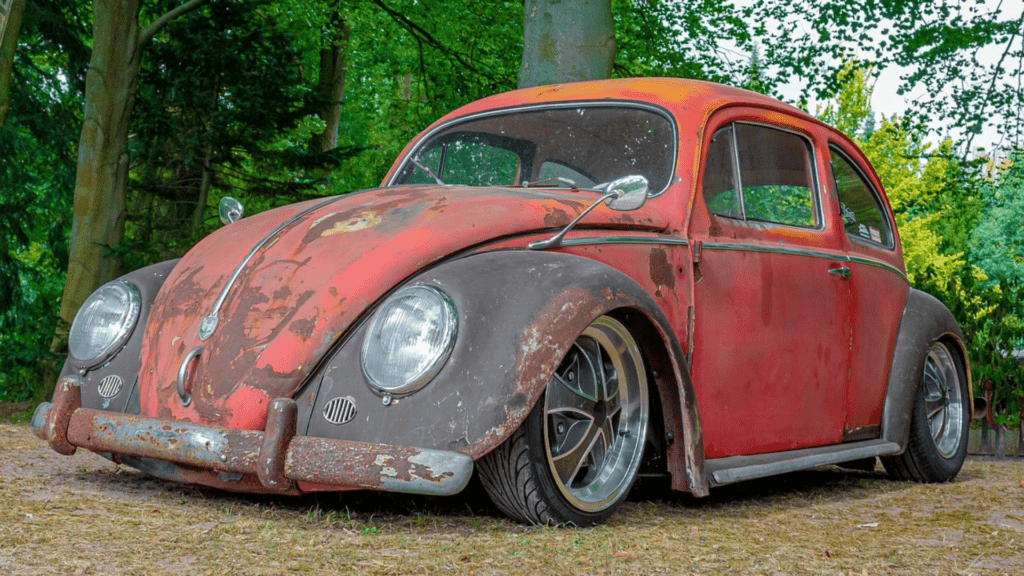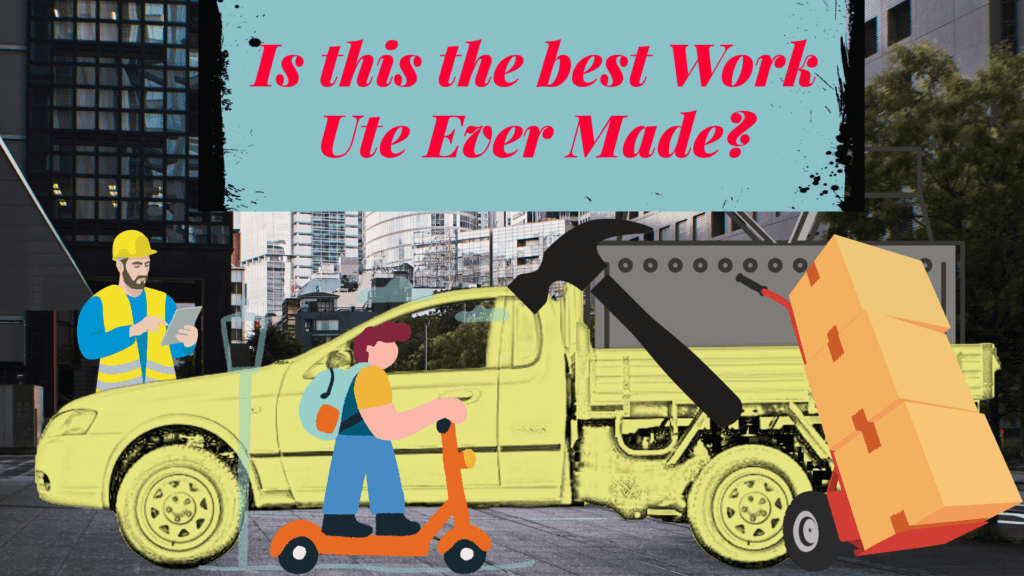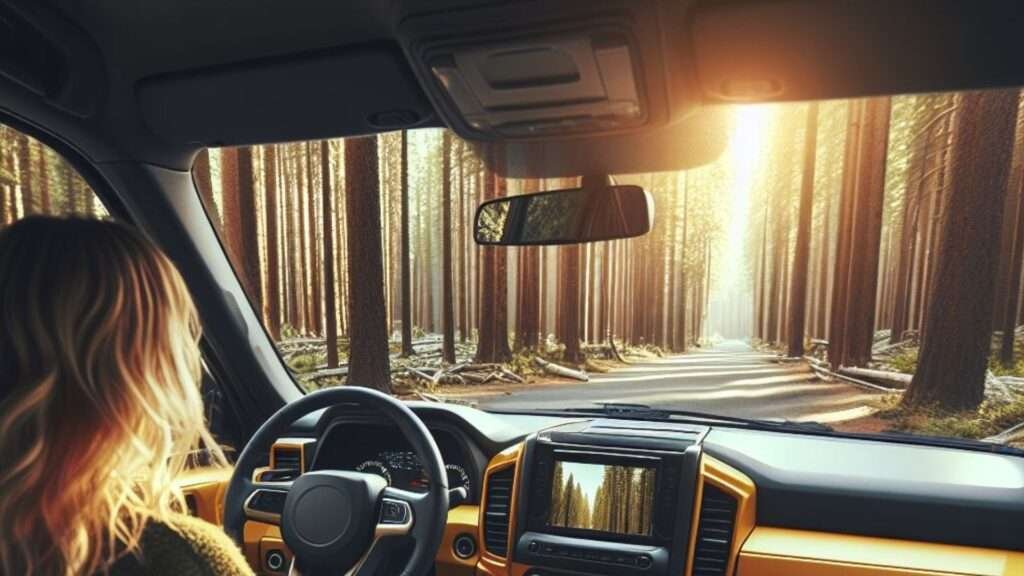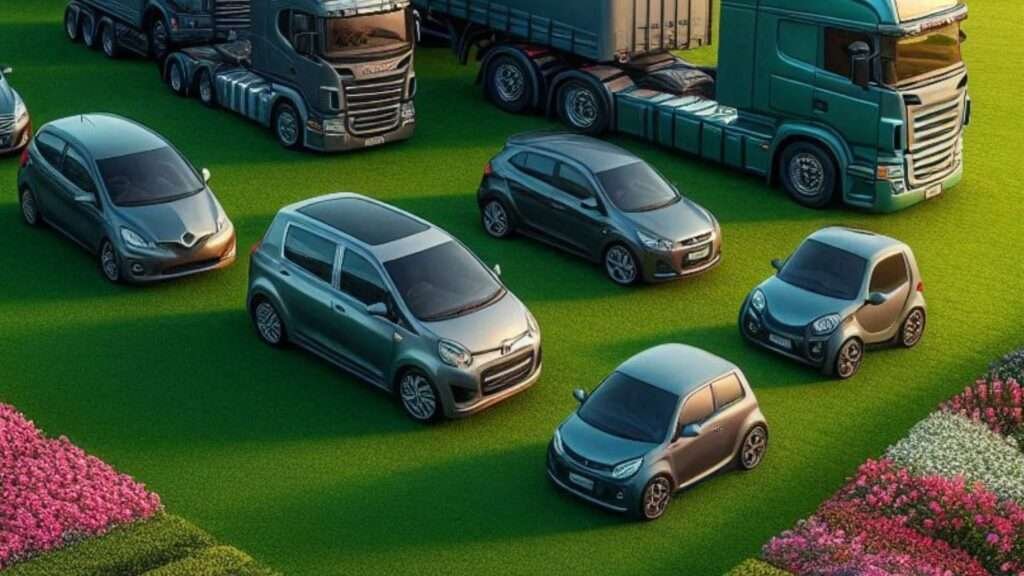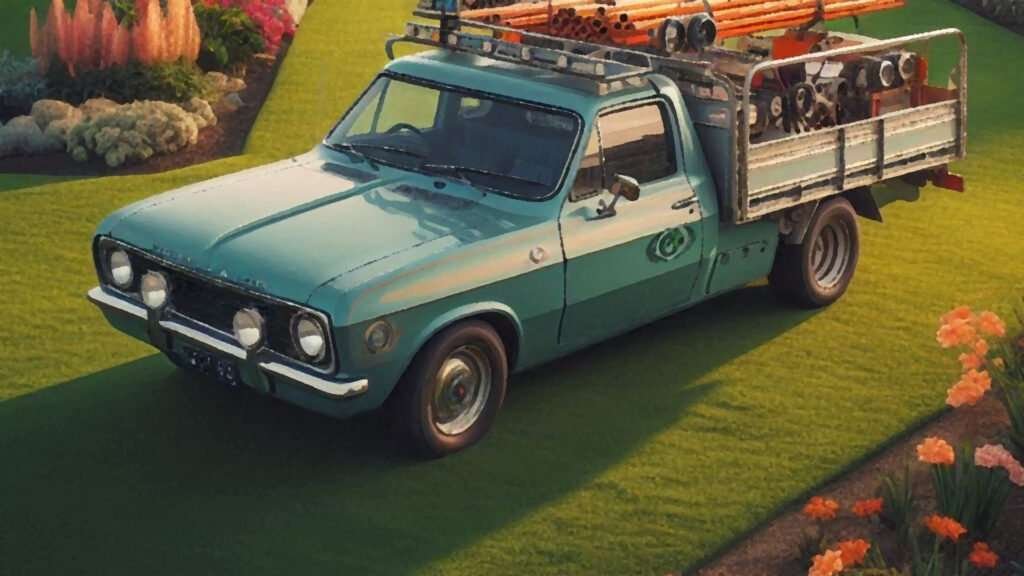Build A Modern Version Of The 1980 Holden WB Series Ute.
In my opinion, the automotive landscape should always be a balance of innovation and homage to the past. Especially when the past gave us vehicles that many of us would love to see rematerialize.
A nostalgic revival that I would love to see GM take on board is for them to capture the imagination of car enthusiasts around the world by building a modern day version of the iconic 1980 Holden WB Series Utility.
The updated version could use a lot of the components from the 2023 Chevrolet Malibu.
This concept would bridges the gap between classic design and contemporary technology and also rekindle the admiration for a vehicle that left an indelible mark on Australia’s automotive history and could be a great option for a lot of tradespeople around the world.
The new version of the Holden 1980 WB Ute could be called the ‘WB Malibu’.
The WB Malibu Would Be A Work Vehicle Made Purely For Workers.
There are a few shortcomings with many of the current 4×4 utility vehicles when it comes to practicality and ease of use for tradespeople.
I think in a lot of circumstances, people are buying a 4×4 utility that they want to have fun with on the weekend and then spend a lot of time and money trying to work out how they can use that for a work vehicle as well.
Whilst 4×4 utility vehicles might be very popular, maybe a large part of the reason for this is due to fact that there doesn’t seem to be a proper tradesperson vehicle on the market any more.
I feel that we’ve made a mistake in this modern work vehicle era; we’ve prioritised huge amounts of weekend fun enabling ground clearance over the need for sheer practicality needed for a work utility vehicle.
In any event, it’s not about pointing any negativity towards modern 4×4 utes, it’s about giving the world a proper (fair dinkum) work ute.
A Measured & Safe Approach via the WB Malibu Ute.
In a bid to correct this forgone focus, WB Malibu would take a measured approach. A low load height simplifies hoisting materials, while an integrated pipe carrying rack with removable and fold down side panels allowing for easier loading.
Transporting lengths of timber or pipe on top of a modern day 4×4 Ute requires either a ladder to tie them off or a young fit tradie with rock-climbing skills to get up the top and tie thing off properly.
No more risking life and limb climbing at dangerous heights to sort out your loads across the top of the vehicle.
If we look at a very popular 2024 4×4 Ute, it has a height of 1848mm, Width 1850mm and length 5225mm.
Compare that with the 1980 WB Ute, it has a height of Height: 1,397mm, Width: 1,725mm and Length: 4,877mm.
When you start looking at the added height of any racking system, you need to be a very tall human to tie down anything up top. This is why when you go to the hardware store you’ll often see tradies climbing up over their vehicles trying to secure the loads on top.
The WB Malibu will be a smart, tradesperson friendly design and a workhorse that will shatter the “bigger is better” utility paradigm.
This work vehicle will be focused on intelligent usability to empower rather than encumber workers.
Building the WB Malibu will make use of the 2023 Chevrolet Malibu.
Engine: 2.0L turbocharged 4-cylinder (250 hp, 292 lb-ft torque).
The WB Malibu will be a dual fuel vehicle, designed to run on E10, E85 Unleaded and LPG.
Transmission: 9-speed automatic transmission.
Brakes: 4-wheel disc brakes with anti-lock braking system (ABS).
Suspension: Front: MacPherson strut, Rear: Multi-link.
Dashboard and Front Seats: Configurable digital instrument cluster, Infotainment system with touch-screen display and the heated and ventilated front seats.
Wheels and Tires: 19-inch alloy wheels with 245/40R19.
Drive Options: 2WD (rear) and 4WD.
Driver Positions (US, Europe & Australasia) : There would need to be both LH and RH Drive Options. WB Malibu L and WB Malibu R.
By leveraging the existing components from the Chevrolet Malibu, General Motors could potentially streamline the development process and reduce costs for the WB Malibu.
However, these components would need to be adapted and reinforced to meet the demands of a utility vehicle, such as increased payload and towing capacities, as well as off-road capabilities.
Offering a 4-wheel drive version of WB Malibu would hopefully be possible without too much fuss. As you would expect, it would come with added costs and engineering challenges and they would need to pass this on to the buyer.
Some of the key additional components and modifications required for a 4WD system on the WB Malibu would include:
Transfer Case: A transfer case would need to be integrated to distribute power between the front and rear axles.
Differential and Driveshafts: The WB Malibu would require Front & Rear Driveshafts, Front, Centre and Rear Differentials.
Reinforced Chassis and Suspension: The chassis and suspension components would need reinforcement to handle the added stresses of off-road use and a 4WD system.
Increased Ground Clearance: There would need to be some raising the ride height and increased wheel articulation for improved off-road capabilities. The goal would be to keep this minimal though.
Low-Range Gearing: For challenging situations, low-range transmission gearing would be beneficial.
The costs associated with launching the 4WD version would be a problem but given the potential appeal to farmers and tradies that have work locations taking them into some tricky terrain and for those wanting to put their motocross bikes in the back on the weekend and take off into bushland, then offering a 4WD version could make the WB Malibu an even more commercially viable and attractive option to a wider audience.
It would also align well with the rugged, capable image of the original GM Holden WB utility.
Ultimately, it would come down to General Motors conducting market research, analysing projected sales volumes, and assessing the potential return on investment for a 4WD variant.
Alternatively, they might just start off with the rear wheel drive vehicle and see how much feedback they get on the need for a 4WD model variant.
What might be some Pros and Cons for Building the WB Malibu?
Pros:
1. Practical design focused on functionality over style, appealing to tradespeople.
2. Opportunity to set a new standard for practical work vehicles.
3. Differentiation from existing Utes that prioritise aesthetics and weekend adventures over a practical work utility.
4. Potential to leverage existing GM platforms/components to reduce development costs.
5. Rekindling GM’s Australian heritage and brand recognition.
6. Filling an underserved niche in the market for no-frills workhorse vehicles.
7. Being Dual Fuel, your range extended due to the capacity of both systems.
Cons:
1. Perceived demand may be limited at first as people will take time to consider trading in or selling their mainstream consumer 4×4 trucks/utes.
2. Engineering and retooling costs to modernize the WB design with the GM Malibu and the additional costs if providing a 4×4 option is needed.
3. GM might need to build a new manufacturing plant or increase the footprint of any existing manufacturing plant.
4. GM would need to work out how many Left and Right Drive Options to make and then program the production runs and order parts accordingly. More of a hassle than a huge problem though I would think.
5. Need to invest in marketing to build brand awareness.
6. Regulatory hurdles and certifications for introducing a new vehicle type.
7. Risk of limited appeal outside of tradespeople or farmer markets.
8. Working out how to best include the LPG Tank, the placement of this could present a challenge or 2 for a work utility where tradies would not want to give up cargo capacity. Two potential solutions might be:
a. Undertray tank: Many dual-fuel vehicles mount the LPG tank underneath the body/tray. This preserves all cargo space but can impact ground clearance.
b. Side-mounted tanks: Install a pair of slimmer LPG tanks along the sides of the tray, still allowing space in the middle for cargo.
Naturally, the ideal solution would be to orient the tanks in a way that minimizes intrusion into the cargo tray while still providing adequate LPG capacity for reasonable range.
Why Not Make The WB Malibu As A Diesel Vehicle?
When we compare the toxicity of Carbon Monoxide (CO) emissions from unleaded petrol vehicles to emissions from diesel vehicles, there are a few key points:
Diesel engines generally produce much lower levels of carbon monoxide compared to gasoline engines. The diesel combustion process results in relatively complete burning of the fuel.
However, diesel engines do produce higher levels of nitrogen oxides (NOx) and particulate matter (PM) emissions, which are also harmful pollutants.
Particulate matter from diesel exhaust is a mixture of soot particles, heavy hydrocarbons, and other substances. These particles can penetrate deep into the lungs and are linked to respiratory and cardiovascular health issues.
Both CO and PM emissions are regulated by vehicle emissions standards and modern engines with proper emissions control systems aim to minimize both.
While CO is more immediately toxic, particulate matter from diesel emissions is considered more dangerous from a long-term public health standpoint due to its links to respiratory diseases, cancer risk, and environmental impacts.
Both types of emissions are harmful, but they present different risks and challenges from a vehicle emissions standpoint but I think with the E10/LPG dual fuel and with the capacity to run the WB Malibu on E85 as well, it could be a bit more environmentally friendly.
I’m also hoping that we’ll get E20 ethanol/unleaded blend soon in a lot of countries.
We Could Also Make A WB Malibu Sandman!
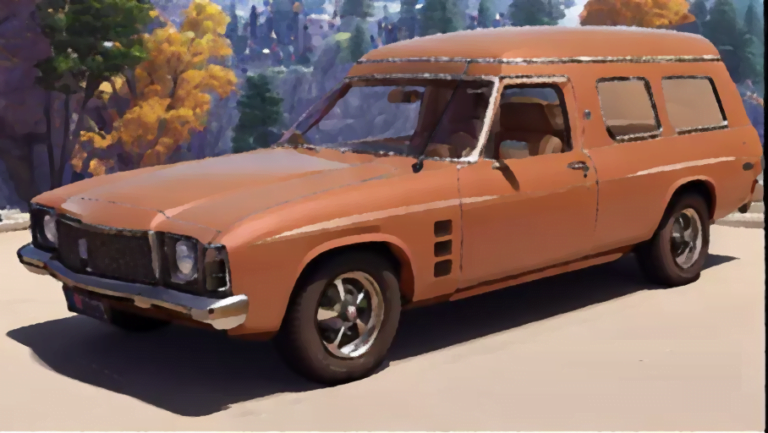
Australians had a strong affinity for panel van variants of utility vehicles for many years.
Panel vans offered versatility as they could be used for both commercial purposes and personal transportation. Their cargo area allowed for hauling goods or equipment, while the front cab comfortably accommodated passengers.
They became closely associated with the surf culture in Australia. It was hard to spot a Panel Van that didn’t have a surf board strapped to the top of it.
Their spacious back of the cars had ample room for sleeping off a big day and night, making them popular among surfers who would take on extended beach trips. The Holden Sandman panel van embodied surf-culture appeal and they were often hotted up and raced down the ¼ mile too.
Panel vans present tradies with a blank canvas for safe and effective storage of their work gear. All too often people are having their tools stolen out of the back of Ute.
Panel Vans give us the option to lock up all of our tools and we can always beef up the rear suspension to take the extra weight.
Enthusiasts would often modify and personalize Panel Vans with unique paint jobs, interior designs, and accessories, reflecting their individual styles and interests.
Compared to passenger cars or larger vans, panel vans were relatively affordable, making them accessible to a wider range of buyers, including younger people seeking their first vehicle.
The simple and functional design of panel vans made them suitable for camping and road trips. Their interior space could be converted into basic living quarters, allowing for a sense of freedom and adventure on the open road.

